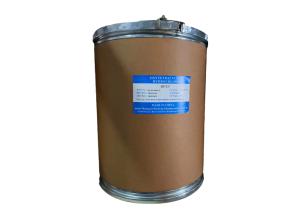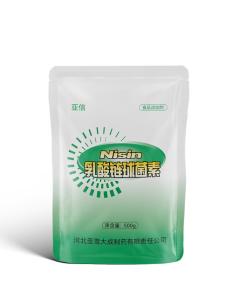

|
- Createtime: 2023-03-06
- Updatetime: 2023-03-10
Product Name: Oxytetracycline Hydrochloride
Chemical Name: C22H25ClN2O9
CAS Number: 2058-46-0
Action and Characteristics:
Oxytetracycline Hydrochloride is a broad-spectrum antibacterial agent that effectively inhibits the growth of bacteria such as Actinobacillus pleuropneumoniae, Staphylococcus aureus, Bacillus anthracis, Clostridium tetani, Pasteurella multocida, Haemophilus parasuis, Mycoplasma, Chlamydia, and Rickettsia. It is also effective in the prevention and treatment of swine mycoplasma pneumonia, hookworm disease, swine influenza, enzootic pneumonia, asthma, swine dysentery, endometritis, and mastitis in pigs and cows; white dysentery, E. coli, vibriosis, omphalitis, and enteritis in poultry; and vibriosis, columnaris disease, and fin rot in aquatic animals.
Compliance:
Our product conforms to the standards of the Chinese Pharmacopoeia, Chinese Veterinary Pharmacopoeia, European Pharmacopoeia (EP), United States Pharmacopoeia (USP), and has obtained certification from the European Directorate for the Quality of Medicines & Healthcare (CEP) and the United States Food and Drug Administration (FDA).
Storage:
The product should be stored in a cool, dry place, protected from light and sealed tightly.
Oxytetracycline Hydrochloride Introduction
Oxytetracyclinehydrochloride is a broad-spectrum antibacterial agent widely used in veterinary medicine to treat and prevent a variety of bacterial infections in animals. It belongs to the tetracycline class of antibiotics and works by inhibiting protein synthesis in bacteria, thereby preventing their growth and reproduction. In this article, we will explore the various properties and applications of oxytetracyclinehydrochloride in detail.
Chemical Properties
Oxytetracyclinehydrochloride has the chemical formula C22H25ClN2O9 and a molecular weight of 496.9 g/mol. It is a yellow crystalline powder that is soluble in water and ethanol but insoluble in ether and chloroform. The compound is stable under normal conditions but can degrade when exposed to light, heat, or acidic conditions.
Mechanism of Action
Oxytetracyclinehydrochloride works by inhibiting the bacterial ribosome, which is responsible for protein synthesis. It binds to the 30S subunit of the ribosome, preventing the attachment of aminoacyl-tRNA to the ribosome's A site, thereby inhibiting protein synthesis. The compound is also known to disrupt the cytoplasmic membrane of bacteria, which leads to leakage of intracellular components and eventual cell death.
Spectrum of Activity
Oxytetracyclinehydrochloride has a broad spectrum of activity against a variety of gram-positive and gram-negative bacteria, as well as some atypical bacteria such as chlamydia and mycoplasma. Some of the bacteria that are susceptible to oxytetracyclinehydrochloride include Staphylococcus aureus, Escherichia coli, Salmonella spp., Pasteurella spp., Actinobacillus spp., Streptococcus spp., and Haemophilus spp.
Applications in Veterinary Medicine
Oxytetracyclinehydrochloride is used in veterinary medicine to treat and prevent a variety of bacterial infections in animals. It is especially effective against respiratory and enteric infections, which are common in livestock and poultry. Some of the diseases that can be treated with oxytetracyclinehydrochloride include:
- Pneumonia: Oxytetracyclinehydrochloride is effective against bacterial pneumonia caused by organisms such as Pasteurella multocida, Actinobacillus pleuropneumoniae, and Mycoplasma spp.
- Enteritis: The compound is effective against enteric infections caused by organisms such as Escherichia coli, Salmonella spp., and Clostridium perfringens.
- Metritis and Mastitis: Oxytetracyclinehydrochloride is effective against bacterial infections of the uterus and mammary gland, respectively.
- Other Infections: The compound can also be used to treat infections such as foot rot, pink eye, and wound infections in animals.
Dosage and Administration
Oxytetracyclinehydrochloride can be administered to animals orally or by injection. The recommended dosage and duration of treatment depend on the severity of the infection, the age and weight of the animal, and the route of administration. It is important to follow the manufacturer's instructions and consult a veterinarian before administering the drug to animals.
Safety and Precautions
Oxytetracyclinehydrochloride is generally safe for use in animals when used as directed. However, it can cause side effects such as diarrhea, vomiting, and allergic reactions in some animals. It is also important to note that the use of oxytetracyclinehydrochloride in food-producing animals can result in residues in meat and milk, which can pose a risk to human health if consumed in large quantities.
Conclusion
Oxytetracycline
Additionally, Oxytetracycline hydrochloride can also be used as a prophylactic agent to prevent bacterial infections. When administered before exposure to an infectious agent, it can provide protection against the development of disease.
In veterinary medicine, oxytetracycline hydrochloride is commonly used to treat respiratory infections in swine, as well as other bacterial infections in a variety of species, including poultry and fish. It has also been used in the treatment of urinary tract infections in dogs and cats, and as a topical treatment for skin infections.
As with any antibiotic, the overuse or misuse of oxytetracycline hydrochloride can lead to the development of antibiotic-resistant bacterial strains. It is important to use this medication only as directed by a veterinarian and to follow proper dosing and administration instructions.
Oxytetracycline hydrochloride is generally considered safe when used as directed, but it can cause side effects in some animals, including diarrhea, vomiting, and loss of appetite. It can also cause photosensitivity in some animals, so it is important to keep treated animals out of direct sunlight.
In conclusion, oxytetracycline hydrochloride is a broad-spectrum antibiotic with a long history of use in veterinary medicine. It is effective against a wide range of bacterial infections and can be administered in a variety of ways, including orally, intravenously, and topically. While it is generally considered safe, it is important to use this medication only as directed by a veterinarian and to follow proper dosing and administration instructions.
-
2023-03-13
How is Nisin produced?
Nisin is a naturally occurring antimicrobial peptide that is produced by certain strains of bacteria, particularly Lactococcus lactis. The process of nisin production involves the ...
MORE -
2023-03-14
How is ε-Polylysine hydrochloride produced?
ε-Polylysine hydrochloride, also known as ε-PL or Poly(ε-lysine), is a natural biopolymer composed of ε-lysine monomers. ε-PL is known for its antimicrobial properties and has...
MORE
- Tel:+8618231198596
- Whatsapp:18231198596
- Chat With Skype







